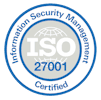A Steelcase Workplace Survey found that 40% of employees waste up to 30 minutes per day looking for a space to meet.
Consider the following case: Jonathan, a project manager at an IT services company, wants to meet up with some of his team members to discuss the final draft of the tender submission for a project.
He rises from his table and scans the meeting rooms. Some of them seem to have their lights on, indicating that someone is using them while a few of the rooms are dark.
He launches his Outlook calendar and looks up the dark rooms. To his disappointment, he finds that the dark rooms are marked as booked.
Jonathan starts looking up the participants in the meetings and starts contacting the organizers to check if they actually need the rooms. In the process, he wastes a solid 30 minutes since he doesn’t know how to release empty meeting room bookings before he can start his own meeting.
Booked meeting rooms that are not occupied are a problem in many organizations across the globe. The potential loss of business opportunities, the unnecessary stress created for those who need rooms and the wasted effort in trying to get people off the meeting rooms affect employee morale.
In this article, we look at potential ways to improve the utilization of meeting rooms by automatically detecting and releasing rooms that are not occupied. These techniques use a combination of software, hardware, and policy implementations that can result in significant improvements in room usage.
There are two primary approaches:
- Automated
- Manual
Automated
Through this approach, a grace period of 10 to 15 minutes is provided by the administrator within which the room needs to be occupied.
If the room is not occupied within the grace period, then the booking is automatically released and the participants are notified.
Depending on what technology you are implementing, the process of detecting occupancy may vary. Here are a few techniques:
Indicating the Start Of the Meeting
The room booking system has a timer that starts once the meeting time has started. The timer tracks the grace period for the meeting. If the participants use the meeting room, the timer stops and the meeting continues. However, if nobody indicates that they are using the room, then the timer will trigger an auto-release once the grace period is over.
Card Scan
When a participant scans his/her card on the door access control system, it triggers the room booking system to mark the room as occupied. However, this can be used only for rooms that have door access control built into them.
Presence Detection
Activity in the room can be detected using various sensor technologies such as motion detection, voice activation, image processing, or AV triggering events. These sensors will inform the room booking system that the meeting room has been occupied.
Manual
In this approach, meeting rooms undergo routine spot checks by the receptionist or the facilities team to identify ghost meetings which are then marked as no-shows and empty meeting room bookings are released. This may not be the best method, but still, some organizations prefer it.
For example, a senior management meeting that was to start at 2 PM, got delayed due to some reason. Such a booking cannot be automatically released. So, a level of manual intervention will be required.
Secondly, automated room release may not be a viable option from a cost standpoint. Except for software-controlled triggering, other techniques may be cost-prohibitive.
Thirdly, in some of the traditional buildings, the meeting room doors are operated by keys that need to be collected from the receptionist. In such cases, there is already a level of control by the receptionist. If the keys are not collected, then the room is not occupied. So, the receptionist can manually trigger a no-show.
Conclusion
Booked but unoccupied meeting rooms are unproductive and cause loss to the organization. In spite of needing it, you cannot access the meeting room because someone forgot to cancel the booking.
However, it is easy to detect such no-shows with a combination of software and hardware. The outcome is that empty meeting room bookings are released and the meeting rooms become available to the people who need them. This can improve room utilization as well as the productivity of the employees.





